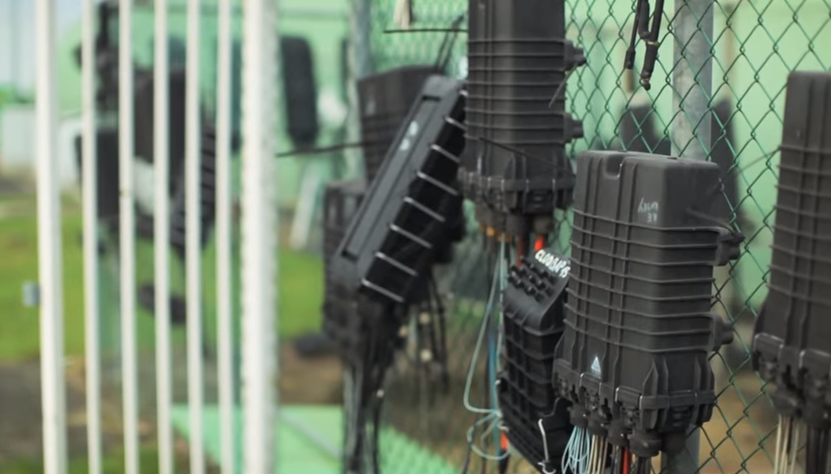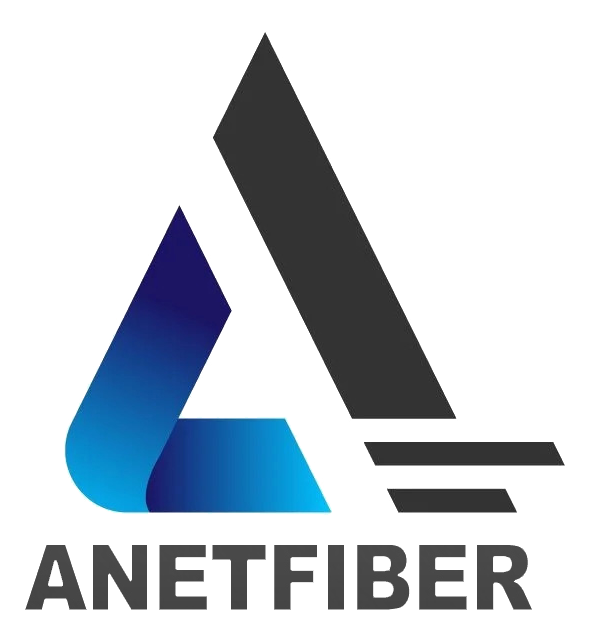5 Essential Design Considerations for Harsh Environment Fiber Optic Cables

Understanding the Basics of Fiber Optic Cables
Fiber optic technology is unique due to its reliance on transmitting data through light pulses. Unlike traditional copper cables, which use electrical signals to transmit data, fiber optic cables utilize optical fibers that carry light waves. This innovative approach allows for faster data transmission, higher bandwidth capacity, and greater resistance to electromagnetic interference.
The role of fiber optic cables in modern communication cannot be overstated. They serve as the backbone of global telecommunications networks, enabling the high-speed transfer of data across vast distances. From internet connectivity to telephone communications, fiber optic cables form the essential infrastructure that powers our interconnected world. Moreover, they play a crucial role in various industries such as healthcare, finance, and education, facilitating seamless information exchange and technological advancements.
Design Considerations for Harsh Environments
When it comes to designing fiber optic cables for harsh environments, several crucial factors must be taken into account to ensure optimal performance and longevity. These design considerations revolve around the mechanical properties of the cables and their ability to withstand various environmental stressors.
Importance of Mechanical Properties
Tensile Strength and Flexibility
One of the primary design considerations for harsh environment fiber optic cables is their tensile strength and flexibility. These cables need to withstand significant tension without breaking, especially in outdoor or industrial settings where they might be exposed to extreme weather conditions. Additionally, flexibility is essential for ease of installation and maneuvering around obstacles, making it a vital aspect of cable design.
Impact Resistance and Bending Capabilities
In harsh environments, fiber optic cables are often subjected to potential impacts and bending stresses. Therefore, it is imperative to incorporate robust impact resistance features into their design. Furthermore, the ability to endure bending without compromising signal integrity is crucial for maintaining reliable data transmission in challenging conditions.
Protection Against Environmental Factors
Moisture and Corrosion Resistance
Extreme weather fiber optic cables must exhibit exceptional resistance to moisture and corrosion. Exposure to moisture can lead to signal degradation or complete failure, making it essential for these cables to have effective moisture barriers. Similarly, corrosion resistance is vital, particularly in industrial environments where corrosive substances may be present.
UV Protection and Temperature Tolerance
Outdoor fiber optic cable durability hinges on its capacity to withstand UV radiation and temperature variations. UV-resistant fiber optic cables are designed to resist the damaging effects of prolonged sun exposure, ensuring long-term reliability in outdoor installations. Moreover, these cables should demonstrate resilience in fluctuating temperatures, from scorching heat to freezing cold.
These design considerations play a pivotal role in ensuring that harsh environment fiber optic cables can deliver consistent performance even in the most demanding conditions.
Specialized Features for Extreme Conditions
In demanding environments such as industrial settings or outdoor installations, ruggedized fiber cables are essential to ensure reliable data transmission and network connectivity. These specialized fiber optic cables are designed with robust features to withstand extreme conditions and provide uninterrupted performance.
Ruggedized Fiber Cables for Industrial Use
Industrial-grade and Military-spec Options
For industrial applications, industrial-grade fiber optics offer unparalleled durability and resilience. These cables are engineered to meet the rigorous demands of industrial environments, where they may be exposed to mechanical stress, vibrations, and harsh chemicals. Similarly, military-spec fiber cables adhere to stringent standards for performance and reliability, making them suitable for military and defense applications where mission-critical communication is imperative.
Enhanced Durability for Outdoor Applications
Outdoor installations require fiber optic cables with enhanced durability to combat environmental challenges. High-temperature fiber optics are specifically designed to withstand elevated temperatures without compromising performance, making them ideal for outdoor use in regions with extreme climate conditions. Additionally, these cables are equipped with protective coatings that shield them from physical damage and environmental factors.
Advanced Solutions for Moisture and Corrosion
Moisture-resistant Fiber Cables
In environments prone to moisture exposure, such as coastal areas or humid climates, moisture-resistant fiber cables are indispensable. These specialized cables feature advanced moisture barriers that prevent water ingress, ensuring consistent signal transmission even in high-humidity conditions. By incorporating moisture-resistant materials into their design, these cables mitigate the risk of signal degradation due to moisture-related issues.
Corrosion-resistant Fiber Optics
Industries dealing with corrosive substances or harsh chemicals necessitate the use of corrosion-resistant fiber optics to maintain network integrity. These cables are engineered with corrosion-resistant materials that safeguard against chemical erosion, ensuring long-term reliability in challenging industrial environments. By implementing corrosion-resistant coatings and materials, these fiber optics offer robust protection against corrosive agents.
Choosing the Right Fiber Optic Cable for Your Needs
When selecting fiber optic cables for specific applications, it is crucial to consider various design factors and installation challenges to ensure optimal performance in harsh environments.
Considerations for Selecting Fiber Optic Cables
Connector Types and Cable Jacket Ratings
The choice of connector types plays a significant role in determining the compatibility and efficiency of fiber optic connections. Different applications may require specific connector types such as LC, SC, or ST connectors based on their respective advantages in terms of size, performance, and ease of use. Additionally, evaluating the cable jacket ratings is essential to assess the cable's suitability for harsh environments. The jacket material should exhibit exceptional resistance to moisture, UV radiation, and mechanical stress to maintain long-term reliability.
Attenuation and Dispersion Factors
Understanding the attenuation and dispersion characteristics of fiber optic cables is paramount when choosing the right cable for your needs. Attenuation, which refers to the loss of signal strength as it travels through the cable, should be minimized to ensure efficient data transmission over long distances. Similarly, managing dispersion effects such as chromatic dispersion and modal dispersion is essential to maintain signal integrity and minimize data distortion.
Installation Challenges in Harsh Environments
Maximizing Tensile Rating and Cable Protection
In harsh environments, maximizing the tensile rating of fiber optic cables is critical to withstand external forces such as tension during installation or environmental stressors. Ensuring robust cable protection through proper routing, secure anchoring, and adequate strain relief mechanisms is imperative to prevent damage due to excessive pulling forces or environmental factors. By prioritizing tensile strength and implementing effective cable protection measures, the risk of cable failure or signal degradation can be significantly reduced.
Addressing Splicing and Breakage Risks
The process of splicing fiber optic cables introduces potential vulnerabilities that must be carefully addressed when installing cables in harsh environments. Properly managing splicing points by utilizing protective enclosures and ensuring precise alignment is essential to maintain signal continuity and minimize signal loss. Moreover, mitigating breakage risks through strategic cable management practices such as minimizing bends beyond recommended limits and employing durable protective conduits can enhance overall system reliability.
By considering these design factors and installation challenges when choosing fiber optic cables for harsh environments, organizations can effectively optimize their network infrastructure for reliable performance even in demanding conditions.
Future Trends in Harsh Environment Fiber Optic Technology
As technology continues to advance, the field of fiber optic design is witnessing a wave of innovations that promise to revolutionize communication infrastructure in harsh environments.
Innovations in Fiber Optic Design
In response to the growing demand for robust and reliable fiber optic solutions, manufacturers are focusing on developing cutting-edge designs that enhance performance and durability. One notable innovation is the integration of advanced materials with enhanced tensile strength and resilience, allowing fiber optic cables to withstand extreme environmental conditions without compromising data transmission quality. Additionally, ongoing research into novel moisture-resistant and corrosion-resistant coatings aims to further fortify fiber optics against the detrimental effects of moisture and corrosive agents, ensuring sustained functionality in challenging settings.
Moreover, advancements in cable construction techniques are paving the way for more flexible and adaptable fiber optic solutions. By leveraging state-of-the-art manufacturing processes, engineers can tailor fiber optic cables to exhibit superior flexibility and impact resistance, making them well-suited for diverse applications across harsh environments. Furthermore, the integration of smart monitoring technologies within fiber optic systems is poised to enable real-time performance tracking and proactive maintenance, bolstering network reliability in industrial, outdoor, and other demanding settings.
The Evolving Landscape of Harsh Environment Applications
The adoption of fiber optic technology is rapidly expanding across a wide spectrum of harsh environment applications. From offshore oil rigs and mining operations to aerospace ventures and renewable energy facilities, organizations are increasingly relying on robust fiber optic solutions to facilitate seamless data connectivity amidst challenging conditions. Furthermore, emerging sectors such as smart infrastructure development and autonomous vehicle networks are embracing fiber optics as a cornerstone technology for enabling high-speed communication in adverse environments.
In addition to traditional telecommunications infrastructure, the utilization of fiber optics is diversifying into new frontiers such as environmental monitoring systems, where reliable data transmission under extreme weather conditions is paramount. The convergence of innovative sensor technologies with ruggedized fiber optics holds immense potential for enhancing environmental resilience and disaster response capabilities.
As these trends continue to unfold, it's evident that the future of fiber optic technology in harsh environments will be characterized by unparalleled adaptability, reliability, and transformative impact across various industries.
See Also
5 Crucial Methods for Installing Fiber Optic Cables
5 Vital Solutions for Managing Fiber Optic Cables in Networks
5 Key Practices for Testing and Maintaining Fiber Optic Cables
5 Must-Know Connectors for Fiber Optic Cables
Key Tips for Troubleshooting and Maintaining Fiber Optic Cables


